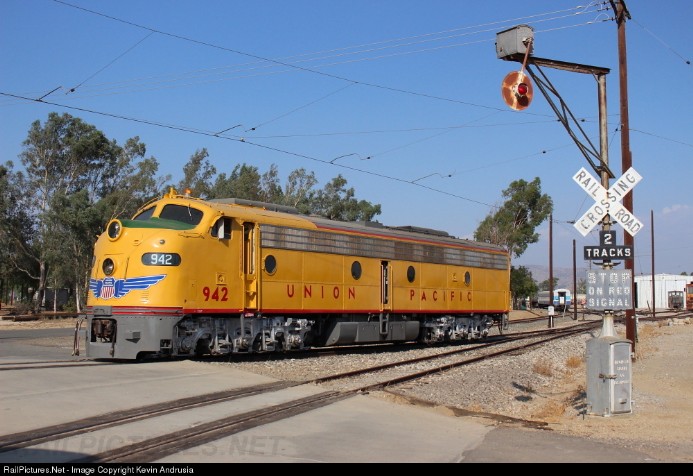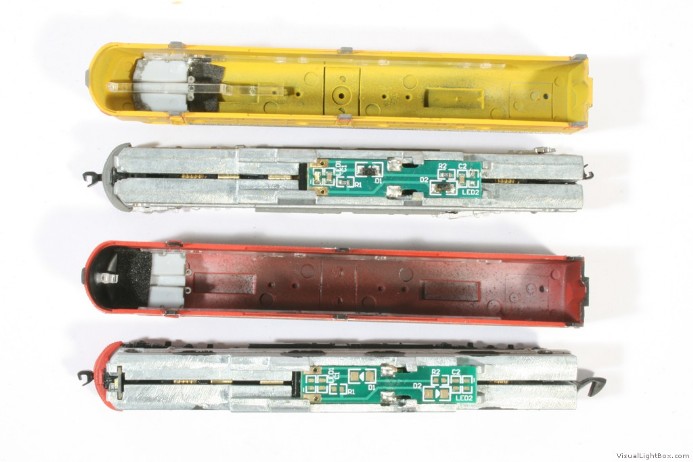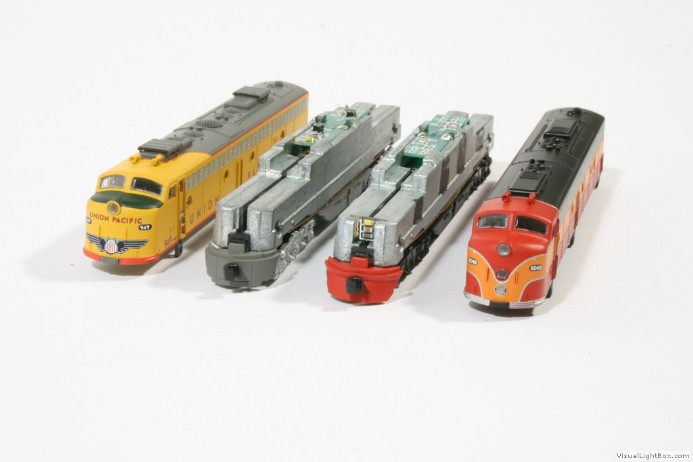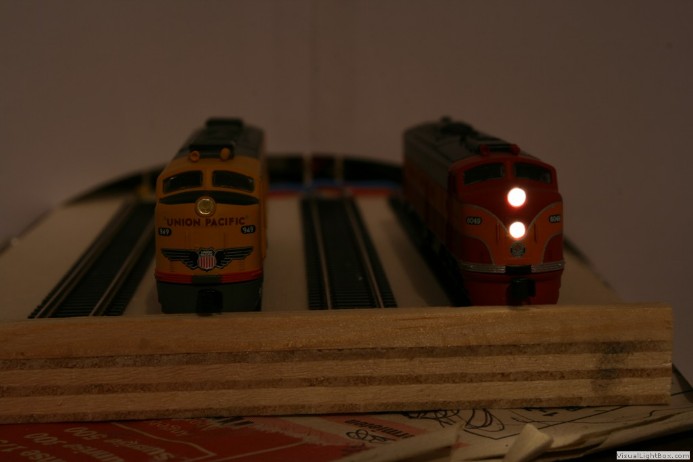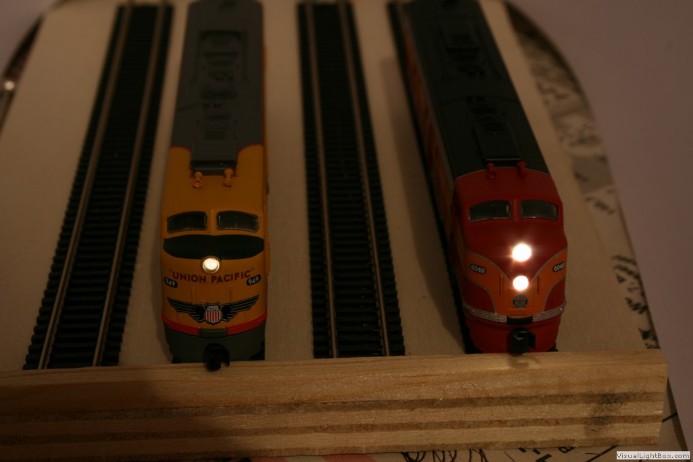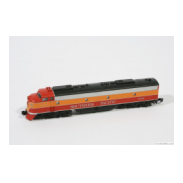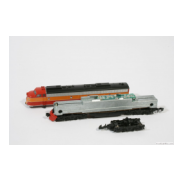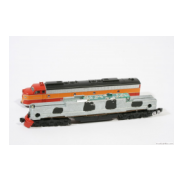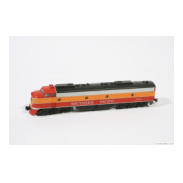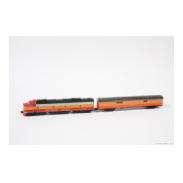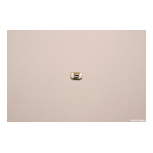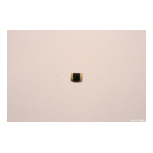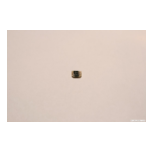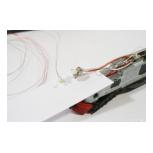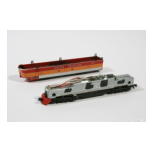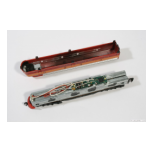EMD E8/E9
The E8 was a 2,250-horsepower (1,678 kW), A1A-A1A passenger-train locomotive built by General Motors' Electro-Motive Division (EMD) of La Grange, Illinois. A total of 450 cab versions, or E8As, and 46 E8Bs were built from August 1949 to January 1954.The 2,250 hp came from two 12 cylinder model 567B engines, each driving a generator to power the two traction motors on one truck. The E8 was the ninth model in the line of passenger diesels of similar design known as EMD E-units. Starting in September 1953, a total of 21 E8As were built which used either the 567BC or 567C engines.
Wikipedia E8: english
The E9 is a 2,400-horsepower (1,790 kW), A1A-A1A passenger train-hauling diesel locomotive built by General Motors' Electro-Motive Division of La Grange, Illinois, between April 1954 and January 1964. 100 cab-equipped A units were produced and 44 cabless booster B units, all for service in the United States. The E9 was the tenth and last model of EMD E-unit and differed from the earlier E8 as built only by the newer engines and a different, flusher-fitting mounting for the headlight glass, the latter being the only visible difference. Since some E8s were fitted with this, it is not a reliable way to distinguish the two. The E9 has two 1,200 hp (895 kW), V12 model 567C engines, each engine driving one generator to power two traction motors.
The EMD E8/E9 engines come in two versions: an AZL and Märklin version. Mechanically they are the same.
The AZL version comes equipped with the front pilot installed. The pilot has a dummy AZL coupler. The pilot can be replaced with the enclosed truck mounted AZL front coupler.
On the other hand, the Märklin version comes with a truck mounted Märklin front coupler. When using the engine as lead engine the enclosed pilot with the dummy AZL coupler and the enclosed truck without a coupler should be installed. This gives a neater look when the engine is the lead engine.
There is a major difference in lighting the headlight between the AZL and Märklin versions. The result is that the AZL version has no or only a weak visible light, while the Märklin version has a bright light. The light of the AZL version is only visible when looking from above.
1. Truck exchange and cosmetics
First, the front truck was exchanged and the pilot mounted.
Then, the chassis was blackened behind the round windows; this gives a more realistic appearance of the model (this is an idea of the trainini magazine: Trainini Magazine: June 2015).
2. Digitalization
Digitalization was carried out with the drop-in decoder of my choice: the AZL4 from TCS, which has two additional functions that were used for illuminating the headlights.
3. Illuminating the headlights
The light printed circuit board (PCB) takes the power from the two chassis halves. After digitalization the light does not function anymore. The light PCB has to be separated electrically from the two chassis halves. The blank copper pads of the back were scrapped away. The blank copper pads of the front were scrapped away from the edges. The slit formed by the two chassis halves has been widened up and the PCB has been inserted, protected with pieces of thin cardboard to make sure that there is no electrical contact between the PCB and the chassis. Wires were soldered to the front pads of the PCB and connected directly to the plus pad and to the function pad F2 of the decoder.
Additionally, a second SMD LED (Bauform 0805, imperial package size) below the original LED was installed to illuminate the lower headlight. The LED was connected with 1.64 kOhm (2 x 820 Ohm) to the other function pad F1. A piece of styrene was glued between the two LEDs to give a better light separation.
4. Mapping
5. Securing the coupler in the pilot
The coupler sticks only loosly in the pilot and can easily get lost. Therefore, it is a good idea to secure the coupler with glue.
AZL Union Pacific E9A/Amtrak E8A
1. Digitalization
Digitalization was carried out with the drop-in decoder AZL4 from TCS.
2. Illuminating the headlight
3. Securing the coupler in the pilot
The coupler sticks only loosly in the pilot and can easily get lost. Therefore, it is a good idea to secure the coupler with glue.

